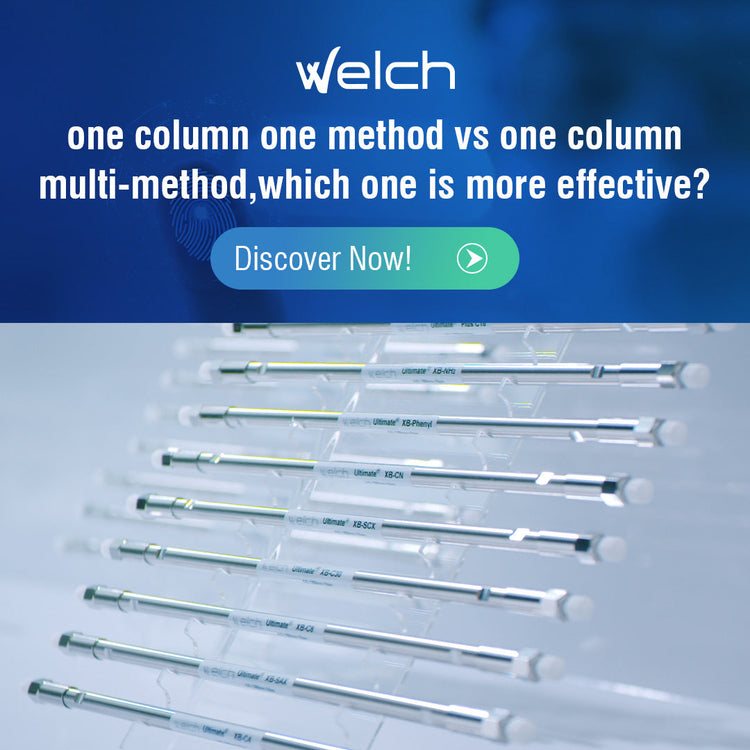One column one method vs one column multi-method, which one is more effective?
Scenario 1:
Ah, what on earth is this unknown peak? It's been interfering with my target peak detection all along. Could it be cross-contamination caused by using HPLC column for multiple project samples? Without identifying the source of contamination, how should I go about washing the column?
Scenario 2:
This HPLC column has been dedicated to Project A all along, and the column efficiency and peak shape have always been fine. What happened today? The retention time is unstable, and the peak shape is so ugly... Could it be that my colleague borrowed the column for method development in Project B yesterday and did something to my column?
Scenario 3:
With so many samples piled up on the lab bench, and the supervisor constantly urging for results, waiting for the procurement process and delivery time for a new chromatography column will definitely delay the experiment. How can the existing chromatography column address this urgent situation?
The scenarios above are frequently encountered by HPLC analysts. In addressing such issues, our suggestion is to opt for "dedicated column usage".
However, feedback from many is that in the current environment of cost reduction and efficiency enhancement, maintaining a large inventory of columns in the laboratory is clearly impractical.
So:
- When is it necessary to use one column one method?
- When is it permissible to share columns?
- How can we strike a balance between the two?
Today, let's discuss how to maximize the utilization of existing "column" resources while ensuring good chromatographic analysis results.

1. What are the impacts of multitasking?
The main issue lies in the different components contained in various samples, especially some strongly retained substances, which may modify the column and lead to differences in detection results. On the other hand, when switching between different mobile phase systems, these strongly retained substances may be eluted from the column, causing detection anomalies. Therefore, when using one column for multiple purposes, to avoid "cross-contamination," the column must be thoroughly cleaned during the switching process; otherwise, it may affect the analysis results.
2. What are the benefits of using the one-column one-method?
- The performance of the HPLC column will be more stable.
- It helps prevent cross-contamination between projects, making it easier to determine the source of contamination and maintain a "one column one method" approach. HPLC columns are less susceptible to contamination, reducing unnecessary diagnostic work. Even in the presence of unknown peak interference, clear project components allow for quick tracing of contamination sources. This enables more targeted cleaning and maintenance of HPLC columns, ensuring the normal progress of analytical work.
- It extends the lifespan of HPLC columns. "One column, multiple uses" can easily lead to problems such as unstable retention times, abnormal peak shapes, and decreased separation efficiency. Incorrect diagnosis and cleaning methods may render the column unable to recover its performance, leading to premature disposal.
3. Here are some scenarios for using “one column one method”:
Ion Pair Reagent in Chromatography Experiments: When conducting chromatography experiments using ion pair reagents, the reagents may modify the HPLC column, making it difficult to completely clean. In such cases, using one column one method column is advisable to prevent cross-contamination.
Sample Analysis Prone to Contaminating Columns: Certain sample analyses, such as ginseng testing or preservative testing, often contain strongly retained substances that are challenging to completely elute. To address the difficulty of analyzing these specific samples, chromatography column manufacturers have introduced dedicated columns, such as ginsenoside-specific columns or preservative-specific columns.
In both of these scenarios, it is not recommended to reuse the HPLC column for other projects after it has been used, either for method development or routine sample analysis.
4.Due to budget constraints, what should be done if it's not possible to achieve the exclusive use of chromatography columns?
Generally, achieving exclusive use of chromatography columns is easier with less commonly used ones (such as amino or sugar columns), while the practice of using one column for multiple purposes is most common with the versatile C18 column.
Whether in academia or industry, it's quite normal for colleagues to borrow columns from each other. We can easily observe the illustrious life of a C18 column, which has been used for analyzing a wide variety of samples.
Tips:
When it's not possible to exclusively dedicate a HPLC column to a specific use, it's advisable to meticulously record details such as the names of samples analyzed and the mobile phase conditions each time the column is used. This documentation facilitates tracing the cause if issues arise with the column.
After each use, ensure thorough cleaning. Reverse flushing the chromatography column after use is particularly beneficial as it helps to remove contaminants adsorbed at the column inlet.
About the topic of one-column one-method vs one-column multi-method, do you have any other differing opinions? Feel free to share your thoughts!

